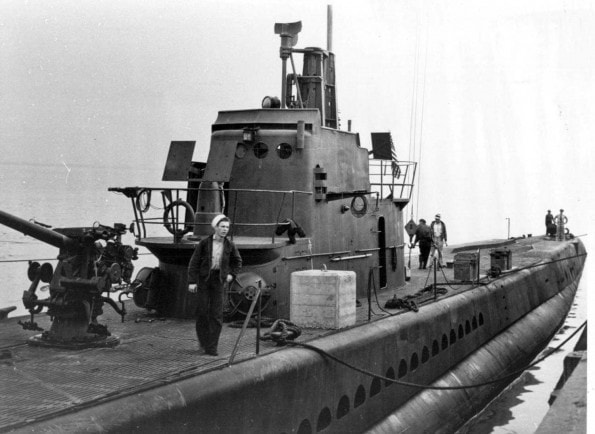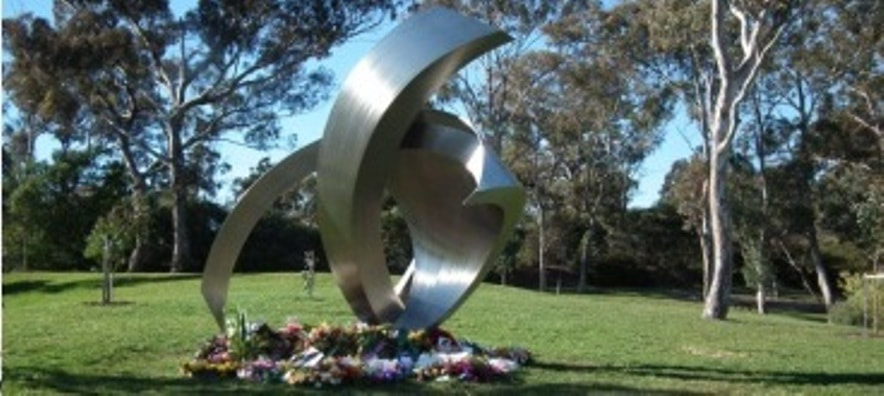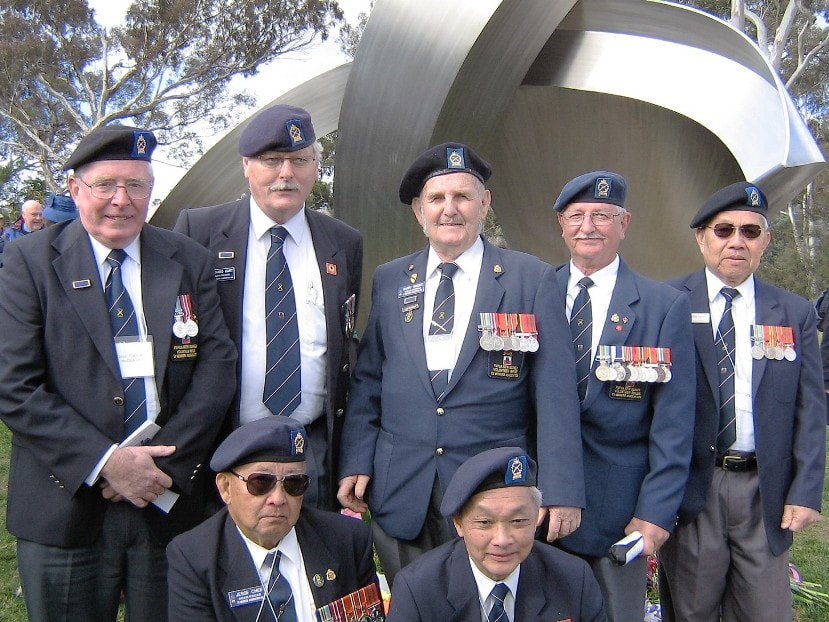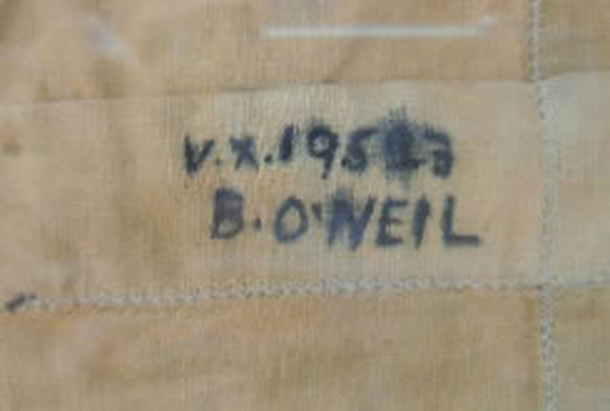Montevideo Maru
The above file has newspaper clippings from WW2 on the ship sinking.
|
2019 marks the 77th anniversary of possibly Australia’s worst single wartime maritime tragedy, the loss of 1,049 servicemen and civilians when the Japanese ship on which they were being transported, the 7,267 ton Montevideo Maru, was torpedoed and sunk by the US submarine SS Sturgeon before dawn off the Philippines coast on 1 July 1942. This was the subs fourth war patrol after leaving Fremantle on 5 June.
Montevideo Maru had left Rabaul the previous week and was on its way to Hainan Island in the South China Sea. It was packed with 849 Australian military personnel and 200 of our civilians, all intended for use as slave labour. The former were mainly from 2/22 Battalion, 1 Independent Company, the New Guinea Volunteer Rifles (NGVR) and other detached personnel. About 80 of this total were from the NGVR, 36 who had been on full-time duty and 44 classified as part-time. Although 20 Japanese sailors survived the event, only two eventually arrived in Manila, the remainder, including the captain, being killed by guerrillas. Watching it all unfold was Rudy Buckley, a Brisbane resident and member of the NGVR and PNGVR Ex-members Association, and part of a family not evacuated from Rabaul prior to the Japanese occupation during January 1942. It was during this period he watched the Australians board the ill fated ship, one of whom, a Corporal O’Neill threw him a handkerchief with his Service Number and name on it. Later Rudy found this man’s full name was Barry Richard David O’Neill, Service VX 19523, who was born 30 March, 1920 in Ararat, Victoria. He enlisted 6 June 1940, was posted to the 2/22 Australian Infantry Battalion and, of course, died 1 July 942. This handkerchief and the full story of the Montevideo Maru are on display in the Association’s museum at Wacol, Brisbane. In 1994 the NGVR and PNGVR Ex-members Association erected a memorial plaque in the Shrine of Memories, Brisbane Cenotaph to those lost on the Montevideo Maru. Each year since a commemorative service is held here on 1 July, with relatives, friends of the victims and others invited to attend. For some time this was the only such memorial, however another was dedicated at Ballarat in Victoria on 7th February 2004, where many of 2/22 Battalion enlisted. This annual service is open to the public and is always held on the morning of the 1st July at the Hall of Memories, Brisbane Cenotaph, followed by morning tea in nearby premises. | ||||||
Some links to other Montevideo Maru websites:
Look at the Montevideo Maru link in Photos for updates.
The Rabaul Nurses Prisoners of World War ll.
Montevideo Maru information can be found on the National Archives
The translated Nominal Roll of POWs aboard can be downloaded below. An interesting story of how the list was discovered can be found here.
Look at the Montevideo Maru link in Photos for updates.
The Rabaul Nurses Prisoners of World War ll.
Montevideo Maru information can be found on the National Archives
The translated Nominal Roll of POWs aboard can be downloaded below. An interesting story of how the list was discovered can be found here.
| Montevideo Maru Japanese list full translation | |
| File Size: | 1695 kb |
| File Type: | doc |
On 1st July 2012 a monument at the Australian War Memorial in Canberra was dedicated to those lost on the ‘Montevideo Maru’. NGVR and PNGVR Association President Phil Ainsworth was, at the time, President of the “Montevideo Maru Society” which raised funds for the memorial. A large number of Association members were present at the dedication.
For further photos and information on the dedication in Canberra in 2012 see - Montevideo Maru 2012
For further photos and information on the dedication in Canberra in 2012 see - Montevideo Maru 2012
Some of the members in front of the Memorial on dedication day.
L-R. Standing. John McGrath, Richard Hart, Barry Wright, Norm Mundy, Ralph Seeto.
Front. Jesse Chee, Douglas Ng’.
For the story behind the funding, construction and dedication of the Memorial see the file below.
L-R. Standing. John McGrath, Richard Hart, Barry Wright, Norm Mundy, Ralph Seeto.
Front. Jesse Chee, Douglas Ng’.
For the story behind the funding, construction and dedication of the Memorial see the file below.
| Rabaul and Montevideo Maru Memorial Canberra. | |
| File Size: | 22 kb |
| File Type: | docx |
BUCKLEY. Rudolph Joseph (Rudy) SGT 860478. 2.8.1030 – 1.8.2018. Rudy was born in Rabaul and was 11 when the Japanese invaded. He was employed by the Japanese to look after the cooking fires along Coal Wharf Road, He was near the wharves when he saw soldiers being loaded onto the Montevideo Maru. A particular soldier saw Rudy and his friend, smiled, and threw them a handkerchief which Rudy picked up and kept. The handkerchief contained the name and Regimental number of VX19523, Cpl Barry Richard David O’Neil of the 2/22nd Bn. In 2004 he presented the handkerchief to the Association Museum where it is now on display in a section dedicated to the Montevideo Maru. 1,053 Australian military and civilian personnel, including 3 members of the NGVR lost their lives when the unmarked prison ship Montevideo Maru was torpedoed by a US submarine.
Rudy also saw executions of Australian New Zealand and US airmen by the Japanese and after the war showed the Imperial War Graves Commission 32 graves of the executed airmen who had been beheaded, bayoneted or shot. He moved to Australia in 1975.
Rudy also saw executions of Australian New Zealand and US airmen by the Japanese and after the war showed the Imperial War Graves Commission 32 graves of the executed airmen who had been beheaded, bayoneted or shot. He moved to Australia in 1975.
Brisbane’s 80th Montevideo Maru Anniversary Commemoration welcoming speech 1 July 2022 – Phil Ainsworth
Councillor for Forest Lakes, Charles Strunk,
Our Patron Maj Gen John Pearn,
Mr Mike Harris, President, Australian American Association, Queensland Division- Brisbane,
Ms Teresa Pokja, Treasurer , Australian American Association, Queensland Division – Brisbane,
Ms Jenny Gregory, President, Australian War Widows, Queensland,
Ms Judy Smith, President elect, Australian War Widows, Queensland,
Major Scott Allen, Salvation Army ( SALVO Minister and bugler),
Mr Lawrence Geldard from Tasmania ( son of Garth Geldard, NGVR , NX 511, murdered at Tol ),
distinguished guests, ladies and gentlemen, and friends
I join with you in remembrance of those who sacrificed their lives in Rabaul and the New Guinea islands after the 1942 Japanese invasion and its aftermath 80 years ago. It is special to be here at the Brisbane Cenotaph, to remember and honour the service of so many soldiers and civilians who faced the initial invasion and occupation of Rabaul and New Guinea Islands and who gave their lives in service for our country and Papua New Guinea.
This service is one of several being held across the nation today; a National Commemorative Service at the Australian War Memorial and others at Bendigo, Stanhope and Trawool in Victoria. The Australian War Memorial’s Last Post Service today will focus on New Guinea Volunteer Rifleman George William Spensley, NGX 490 who died on the Montevideo Maru. NGVR Member Michael White will lay a wreath and read the Ode at the National Service while NGVR member Ross Johnson will lay a wreath at the Last Post Service. The Papua New Guinea Association of Australia will hold a commemorative dinner in Canberra tonight.
On behalf of the New Guinea Volunteer Rifles and Papua New Guinea Volunteer Rifles Ex-members Association I thank those who have contributed so much to this service, and those who have travelled far to be here. Particularly I thank the Brisbane City Council and the Queensland Library Service for the use of these hallowed premises for this important service. The first annual service in Queensland honouring the loss of those on the Montevideo Maru was held here in 1994 .
On this day 80 years ago over 840 Prisoners of War and over 200 civilian internees, all Australians were lost when the Japanese Prison Ship MV Montevideo Maru was sunk off Luzon Island, the Philippines by friendly fire. The POWs and internees boarded the Montevideo Maru in Rabaul on 22 June bound for Hainan Island, China to be used as slave labour. About 50 of these men were from Queensland.
The Prisoners of War were from Lark Force and 1 Independent Company. Lark Force comprised the 2/22 Battalion of about 940 men supported by 13 ancillary units comprising about 500 soldiers including 80 New Guinea Volunteer Rifle men. I independent Company was a screening force scattered in the islands north of Rabaul and comprised about 225 with 170 in New Ireland. Additionally there were about 120 RAAF personnel in Rabaul. The 2/22 Battalion lost 411 men, the support units lost over 300 including 36 from the New Guinea Volunteer Rifles, and the I Independent Company lost 132 on the Montevideo Maru.
The civilian internees lost were a cross section of the community being public servants, police officers, planters, bankers, traders, tradesmen, missionaries etc, the youngest 15 years of age, 58 men had served in WW1, several with great distinction. The wives and children of the civilians who died, about 350, were evacuated to Australia late 1941. They lost their husbands, fathers, homes, possessions and means of support; they became refugees in Australia. However no offer for evacuation was made to the civilian men.
Overall it is estimated 1,400 of the 1,700 Australian men present at the time of the invasion died, 1,053 on the Montevideo, 160 at the Tol and other massacres and the remainder either in action or through disease and hunger during their attempt to escape. To place this tragic 1942 event in perspective, the 1,400 deaths represent a casualty rate of 82 %. The number captured is about 6% of all Australian Prisoners of War taken in all theatres of war during WW2 and their deaths comprised about 15% of all Australian Prisoners of War who died during captivity. As a maritime disaster, the sinking of the Montevideo Maru with over 1,000 Australians aboard compares in number with the loss of 645 on HMAS Sydney and 258 on the hospital ship Centaur. The HMAS Sydney and Centaur wrecks have been found which brought closure to those families affected. Perhaps the finding of the Montevideo Maru may occur in the future and bring a similar closure to affected families.
When Japan surrendered in August 1945, the first Australian naval ship in Rabaul could find only 26 Europeans prisoners, no Lark Force personnel. The 26 comprised 18 British servicemen, 4 Australian civilians , 2 US airman , I NZ airman and a former NGVR and M Force soldier John Murphy. It was not until October 1945 that families of the lost men were notified of their death on the Montevideo Maru, three and half years after the event. No inquest or formal investigation was ever made.
It was not until the 21st June 2010 that both houses of Federal Parliament on behalf of the Australian people, passed resolutions recognising and honouring the sacrifice and loss and offered condolences to their families of the men lost in the New Guinea Islands and on the Montevideo Maru.
A National Rabaul and Montevideo Maru Monument in the grounds of the Australian War Memorial was dedicated by the Governor General on the 70th Anniversary of the sinking. Presently this Monument is being stored until the Australian War Memorial upgrade has been completed.
We remember and honour those 1,400 men who died at the time of the Japanese invasion and its aftermath including those 1,053 men lost on the hell-ship Montevideo Maru, the worst maritime disaster the Australian nation has known, those 160 murdered at Tol and others who died attempting their escape. We acknowledge and honour the service of those who made extraordinarily arduous escapes. We acknowledge the persistence and fortitude of those women and children who were evacuated and lost their husbands and fathers. All have contributed to making our nation what it is today, and they will not be forgotten.
Phil Ainsworth, 1 July 2022
Councillor for Forest Lakes, Charles Strunk,
Our Patron Maj Gen John Pearn,
Mr Mike Harris, President, Australian American Association, Queensland Division- Brisbane,
Ms Teresa Pokja, Treasurer , Australian American Association, Queensland Division – Brisbane,
Ms Jenny Gregory, President, Australian War Widows, Queensland,
Ms Judy Smith, President elect, Australian War Widows, Queensland,
Major Scott Allen, Salvation Army ( SALVO Minister and bugler),
Mr Lawrence Geldard from Tasmania ( son of Garth Geldard, NGVR , NX 511, murdered at Tol ),
distinguished guests, ladies and gentlemen, and friends
I join with you in remembrance of those who sacrificed their lives in Rabaul and the New Guinea islands after the 1942 Japanese invasion and its aftermath 80 years ago. It is special to be here at the Brisbane Cenotaph, to remember and honour the service of so many soldiers and civilians who faced the initial invasion and occupation of Rabaul and New Guinea Islands and who gave their lives in service for our country and Papua New Guinea.
This service is one of several being held across the nation today; a National Commemorative Service at the Australian War Memorial and others at Bendigo, Stanhope and Trawool in Victoria. The Australian War Memorial’s Last Post Service today will focus on New Guinea Volunteer Rifleman George William Spensley, NGX 490 who died on the Montevideo Maru. NGVR Member Michael White will lay a wreath and read the Ode at the National Service while NGVR member Ross Johnson will lay a wreath at the Last Post Service. The Papua New Guinea Association of Australia will hold a commemorative dinner in Canberra tonight.
On behalf of the New Guinea Volunteer Rifles and Papua New Guinea Volunteer Rifles Ex-members Association I thank those who have contributed so much to this service, and those who have travelled far to be here. Particularly I thank the Brisbane City Council and the Queensland Library Service for the use of these hallowed premises for this important service. The first annual service in Queensland honouring the loss of those on the Montevideo Maru was held here in 1994 .
On this day 80 years ago over 840 Prisoners of War and over 200 civilian internees, all Australians were lost when the Japanese Prison Ship MV Montevideo Maru was sunk off Luzon Island, the Philippines by friendly fire. The POWs and internees boarded the Montevideo Maru in Rabaul on 22 June bound for Hainan Island, China to be used as slave labour. About 50 of these men were from Queensland.
The Prisoners of War were from Lark Force and 1 Independent Company. Lark Force comprised the 2/22 Battalion of about 940 men supported by 13 ancillary units comprising about 500 soldiers including 80 New Guinea Volunteer Rifle men. I independent Company was a screening force scattered in the islands north of Rabaul and comprised about 225 with 170 in New Ireland. Additionally there were about 120 RAAF personnel in Rabaul. The 2/22 Battalion lost 411 men, the support units lost over 300 including 36 from the New Guinea Volunteer Rifles, and the I Independent Company lost 132 on the Montevideo Maru.
The civilian internees lost were a cross section of the community being public servants, police officers, planters, bankers, traders, tradesmen, missionaries etc, the youngest 15 years of age, 58 men had served in WW1, several with great distinction. The wives and children of the civilians who died, about 350, were evacuated to Australia late 1941. They lost their husbands, fathers, homes, possessions and means of support; they became refugees in Australia. However no offer for evacuation was made to the civilian men.
Overall it is estimated 1,400 of the 1,700 Australian men present at the time of the invasion died, 1,053 on the Montevideo, 160 at the Tol and other massacres and the remainder either in action or through disease and hunger during their attempt to escape. To place this tragic 1942 event in perspective, the 1,400 deaths represent a casualty rate of 82 %. The number captured is about 6% of all Australian Prisoners of War taken in all theatres of war during WW2 and their deaths comprised about 15% of all Australian Prisoners of War who died during captivity. As a maritime disaster, the sinking of the Montevideo Maru with over 1,000 Australians aboard compares in number with the loss of 645 on HMAS Sydney and 258 on the hospital ship Centaur. The HMAS Sydney and Centaur wrecks have been found which brought closure to those families affected. Perhaps the finding of the Montevideo Maru may occur in the future and bring a similar closure to affected families.
When Japan surrendered in August 1945, the first Australian naval ship in Rabaul could find only 26 Europeans prisoners, no Lark Force personnel. The 26 comprised 18 British servicemen, 4 Australian civilians , 2 US airman , I NZ airman and a former NGVR and M Force soldier John Murphy. It was not until October 1945 that families of the lost men were notified of their death on the Montevideo Maru, three and half years after the event. No inquest or formal investigation was ever made.
It was not until the 21st June 2010 that both houses of Federal Parliament on behalf of the Australian people, passed resolutions recognising and honouring the sacrifice and loss and offered condolences to their families of the men lost in the New Guinea Islands and on the Montevideo Maru.
A National Rabaul and Montevideo Maru Monument in the grounds of the Australian War Memorial was dedicated by the Governor General on the 70th Anniversary of the sinking. Presently this Monument is being stored until the Australian War Memorial upgrade has been completed.
We remember and honour those 1,400 men who died at the time of the Japanese invasion and its aftermath including those 1,053 men lost on the hell-ship Montevideo Maru, the worst maritime disaster the Australian nation has known, those 160 murdered at Tol and others who died attempting their escape. We acknowledge and honour the service of those who made extraordinarily arduous escapes. We acknowledge the persistence and fortitude of those women and children who were evacuated and lost their husbands and fathers. All have contributed to making our nation what it is today, and they will not be forgotten.
Phil Ainsworth, 1 July 2022




